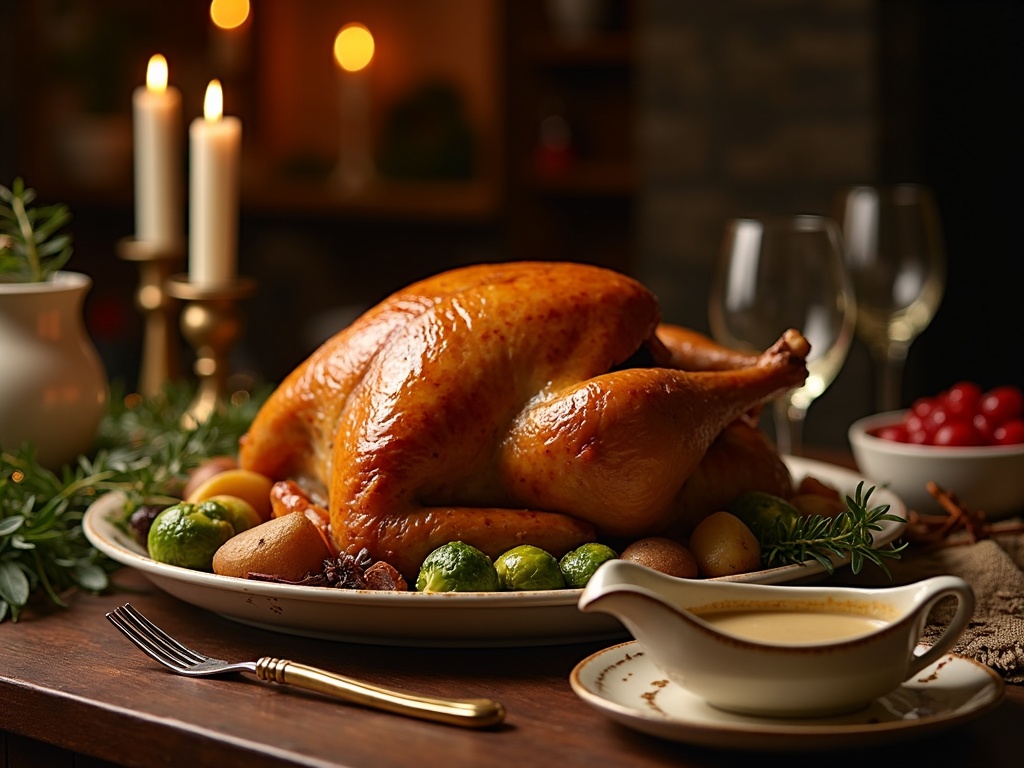Bread sauce stands as a quintessential British condiment with medieval origins, remaining a beloved staple of holiday meals for centuries. This creamy, aromatic accompaniment made from milk-soaked bread and warming spices provides the perfect balance to rich roasted meats, particularly the traditional Christmas turkey dinner.
Find In This Article
Key Takeaways
- Bread sauce originated in medieval Britain as a way to use stale bread and showcase expensive imported spices like cloves, nutmeg, and mace.
- The sauce exemplifies sustainable cooking practices by transforming leftover bread into a delicious accompaniment that reduces food waste.
- Traditional preparation involves infusing milk with a clove-studded onion before adding breadcrumbs for a velvety, spiced texture.
- Modern adaptations include dairy-free versions using plant milks and creative additions like garlic, fresh herbs, or cream for enhanced flavor.
- While primarily served with poultry, bread sauce pairs well with various dishes and can be prepared ahead of time for convenience during holiday meal preparation.
The Ultimate British Holiday Tradition You Need to Know
I’ve found that bread sauce remains one of Britain’s most distinctive yet underappreciated culinary treasures. This creamy, aromatic condiment has graced British holiday tables for centuries, particularly alongside the traditional Christmas turkey dinner. Unlike gravy or cranberry sauce, it’s uniquely British and rarely found outside the UK.
Rich Historical Roots
Bread sauce traces its origins to medieval cookery, with recipes dating back to the 14th century. During this period, bread served as a common thickening agent before flour became widely available. The earliest recorded recipes featured day-old bread soaked in milk, infused with spices like cloves, mace, and nutmeg—ingredients that remain essential to this day.
Medieval aristocrats valued bread sauce not just for its taste but as a way to showcase expensive imported spices. This humble sauce evolved from these noble beginnings into a cornerstone of British festive dining.
Holiday Dining Essential
Today, bread sauce stands as a quintessential part of the British Christmas feast. It sits proudly alongside other traditional elements like:
- Yorkshire puddings (though these typically accompany beef rather than turkey)
- Crisp roast potatoes
- Brussels sprouts
- Cranberry sauce
- Stuffing varieties
- Cauliflower cheese (in many households)
What makes bread sauce special is its subtle, comforting flavor that pairs perfectly with the richness of roast meats. The velvety texture and gentle spicing provide balance to the Christmas plate—cutting through fatty meats while adding a layer of warmth.
British food writer Nigel Slater describes bread sauce as “an edible comfort blanket,” capturing its soothing, nostalgic quality. For many British families, Christmas dinner simply feels incomplete without this humble white sauce on the table.
The enduring popularity of bread sauce speaks to Britain’s appreciation for culinary traditions and the value placed on preserving heritage recipes. While many British festive foods have evolved dramatically over centuries, bread sauce remains remarkably true to its medieval roots—a living connection to Britain’s gastronomic past.
When planning your next holiday feast, consider introducing this uniquely British tradition to your table. It pairs wonderfully with turkey, chicken, game birds, and even beef dishes, offering a taste of British heritage that has stood the test of time.
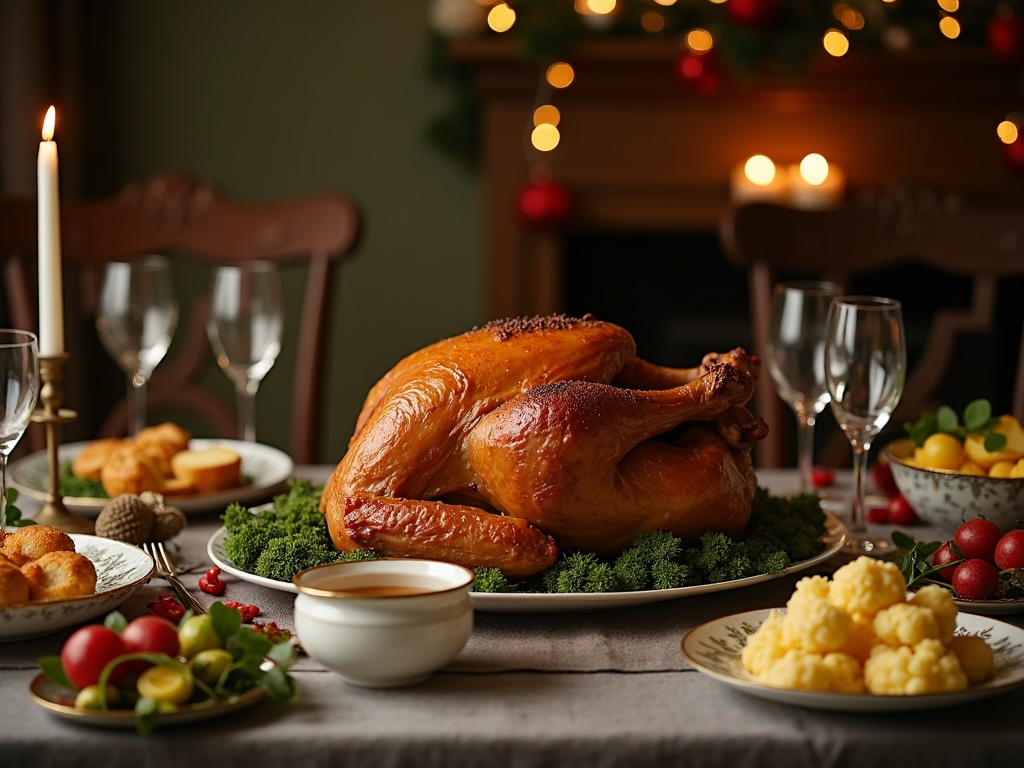
Making the Perfect Bread Sauce
Bread sauce stands as one of those classic British accompaniments that transforms a simple meal into something special. I’ve perfected my technique over the years, focusing on getting that smooth, velvety texture that complements festive roast dinners so beautifully.
Essential Ingredients
The foundation of an excellent bread sauce relies on just a few simple ingredients:
- Stale white bread (crusts removed and torn into pieces)
- Full-fat milk
- One medium onion (studded with cloves)
- Butter (unsalted works best)
- Seasonings (white pepper, freshly grated nutmeg, and sage)
The quality of your bread matters significantly. I’ve found that day-old bread works better than fresh as it absorbs the milk more effectively, creating that perfect thick consistency without becoming gluey.
The Perfect Preparation Method
Creating bread sauce is all about patience and gentle cooking. I start by placing the milk in a saucepan with a peeled onion studded with cloves. This infusion process is crucial – I gently heat the milk to just below simmering point, then let it stand for about 30 minutes to allow the flavors to develop fully.
Next, I strain the milk, removing the onion, and return it to low heat. This is when I gradually add the bread pieces, stirring continuously to prevent any lumps from forming. The transformation is quite remarkable – within minutes, the bread breaks down, creating a smooth, creamy sauce.
Finally, I incorporate butter and seasonings to taste. A generous pinch of nutmeg, white pepper, and a touch of sage elevates the flavor profile considerably. The finished sauce should coat the back of a spoon but remain pourable.
For those watching their nutritional intake, a typical serving (100g) of bread sauce contains approximately 150-200 calories, with 5g of protein, 20-25g of carbohydrates, and 6-12g of fat. It pairs wonderfully with hearty meat dishes or as a complement to vegetable-based mains.
The beauty of bread sauce lies in its versatility – once you’ve mastered the basic recipe, you can adjust the consistency by adding more milk for a thinner sauce or more bread for something heartier. I sometimes add a splash of cream at the end for extra richness on special occasions.
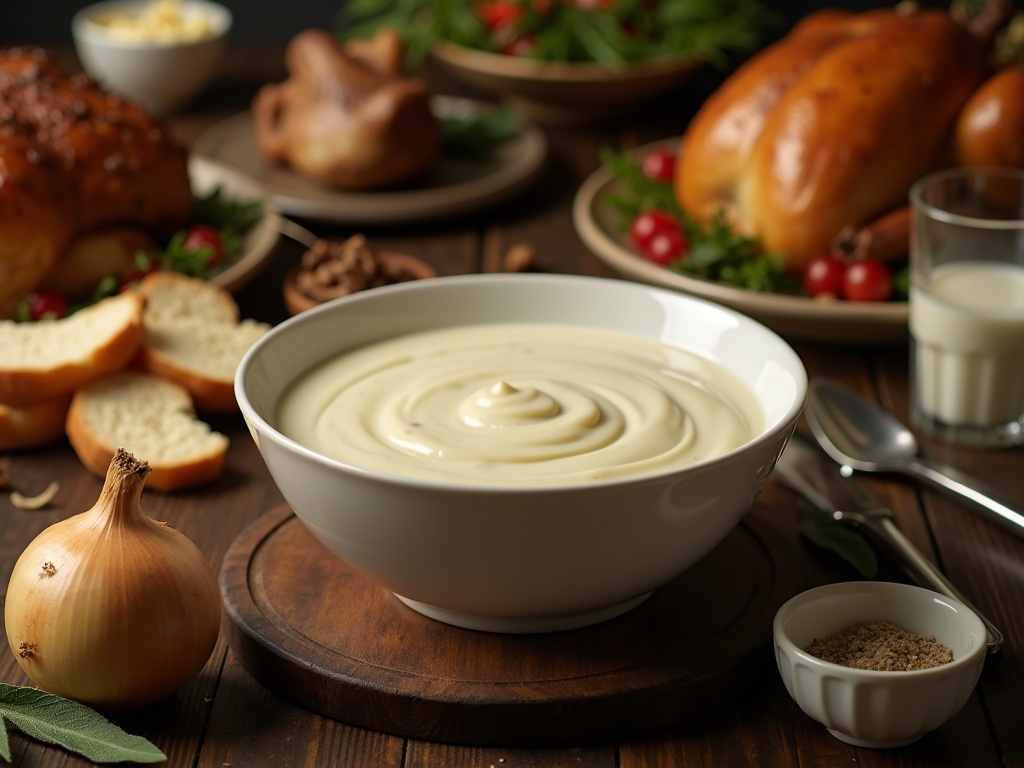
Sustainable Cooking and Cultural Heritage
Bread sauce perfectly captures the essence of British culinary thriftiness and sustainable cooking practices. I’ve always admired how this humble sauce transforms stale bread into something truly delightful, embodying centuries of resourceful British cooking wisdom.
Historical Roots and Sustainable Values
Dating back to the 19th century, bread sauce has been a staple of British holiday meals, particularly during Christmas celebrations. The genius of bread sauce lies in its primary ingredient – leftover bread that might otherwise be discarded. This approach to cooking mirrors contemporary concerns about food waste, though it originated centuries ago when wasting food wasn’t just environmentally problematic but economically impractical.
The brilliance of bread sauce is found in its simplicity. By combining stale bread with warm milk, onions, and spices like cloves and nutmeg, British cooks created a creamy, comforting accompaniment that paired perfectly with poultry dishes like the traditional roast dinner with Yorkshire puddings. The sauce transforms what would be waste into a cherished dish that continues to grace holiday tables.
This practical approach to cooking connects directly to broader sustainable practices in the kitchen:
- Reducing food waste by repurposing stale bread
- Using simple, accessible ingredients available in most households
- Creating nourishing food from items that might otherwise be discarded
- Minimizing the need for commercial sauces with their packaging and transportation footprint
The cultural significance of bread sauce extends beyond its practical origins. It represents a distinctive element of British food heritage that has persisted despite changing culinary fashions. While not as widely known as cauliflower cheese or other British classics, bread sauce carries equal cultural importance among traditional cooks.
I find it fascinating how bread sauce sits at the intersection of sustainability and tradition. Long before “zero-waste cooking” became a trendy concept, British home cooks were practicing these principles out of necessity and common sense. This sauce tells a story of resourcefulness that resonates with modern concerns about sustainability.
For those exploring traditional British cooking, bread sauce offers an accessible entry point that doesn’t require specialized ingredients or techniques. Its creamy texture and subtle spiced flavor complement not just the traditional roast turkey or chicken but can also enhance simpler meals like a cheese sandwich or beef casserole.
The revival of interest in bread sauce among younger cooks reflects a growing appreciation for traditional methods that minimize waste. As more people seek to reduce their environmental impact through food choices, recipes like bread sauce provide a connection to sustainable practices of the past that remain relevant today.
On cold winter evenings, I find few things more comforting than a plate of roast chicken with bread sauce and a cup of homemade hot chocolate to follow. This simple pleasure connects me to generations of British cooks who found ingenious ways to create memorable meals while wasting nothing – a lesson in sustainability that’s as valuable today as it was centuries ago.
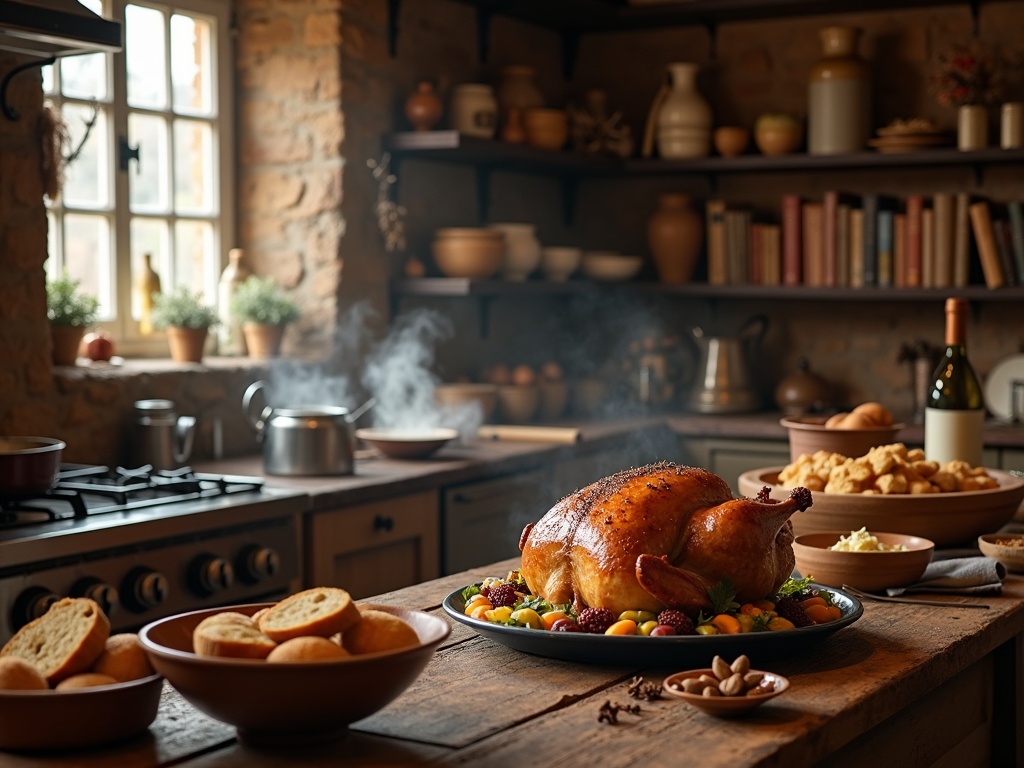
Modern Twists on a Classic Recipe
Bread sauce has evolved significantly beyond its medieval roots while maintaining its comforting character. I’ve discovered several contemporary additions that breathe new life into this traditional accompaniment. Adding a splash of cream just before serving creates a silkier texture that melts beautifully alongside holiday roast dinners. Infusing the milk with a crushed garlic clove or incorporating fresh herbs like thyme or sage can transform the flavor profile entirely.
Adapting for Different Dietary Needs
Dietary restrictions needn’t prevent anyone from enjoying this classic sauce. For those following plant-based diets, I’ve found excellent alternatives:
- Oat milk provides a creamy base that closely mimics traditional dairy
- Coconut cream adds richness while imparting a subtle exotic note
- Almond milk works well when paired with additional aromatics
- Nutritional yeast can replace the umami notes usually provided by butter
Regional variations across the UK showcase the versatility of bread sauce. In parts of northern England, some cooks incorporate hearty beef stock for a more savory profile. Meanwhile, southern counties sometimes add grated onion or finely diced celery for textural contrast and flavor depth.
I’ve experimented with incorporating roasted garlic instead of the traditional whole cloves, resulting in a sweeter, more caramelized flavor. Another interesting twist involves using specialty breads—a sourdough base creates a tangier sauce that pairs wonderfully with rich cauliflower cheese.
Temperature serves as a critical factor in serving bread sauce properly. While traditionally kept warm throughout the meal, I recommend serving it hot rather than merely warm—this prevents it from becoming too thick and gluey on the plate. A small insulated gravy boat or warmed serving dish helps maintain the ideal temperature.
This adaptable sauce continues finding new audiences as home cooks discover its remarkable versatility beyond just the Christmas table, making appearances alongside Sunday roasts and Yorkshire puddings throughout the year.
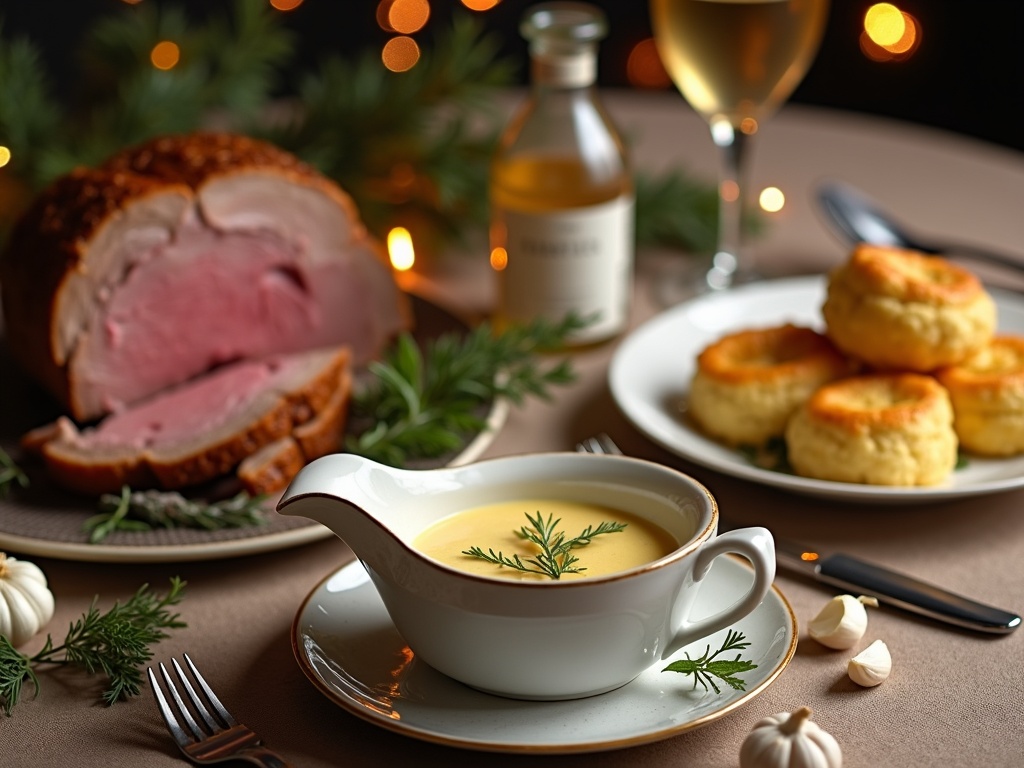
Perfect Pairings and Serving Ideas
Bread sauce has earned its place as a cherished accompaniment that elevates numerous dishes beyond their basic form. I’ve found that this velvety, aromatic sauce creates magic when paired thoughtfully with both traditional and contemporary dishes.
Classic and Creative Companions
The most traditional pairing for bread sauce is undoubtedly with roast poultry. The creamy, slightly spiced notes of the sauce create a perfect balance against the savory richness of roast turkey for Christmas dinner or a simple roast chicken for Sunday lunch. The contrast between the crisp skin of the bird and the smooth texture of the sauce creates a truly delightful eating experience.
Beyond the classic applications, I’ve discovered several creative ways to incorporate bread sauce into various dishes:
- As a filling for puff pastry parcels – mix with leftover chicken and vegetables for a comforting hand pie
- Spread inside a cheese sandwich for a gourmet twist on a lunchtime classic
- Use as a base for a white pizza instead of traditional tomato sauce
- Incorporate into a savory casserole for added depth and creaminess
Vegetarians needn’t miss out on the joys of bread sauce. It pairs exceptionally well with roasted root vegetables, particularly parsnips and carrots. I’ve also found it makes a fantastic partner for cauliflower cheese, adding an extra dimension of flavor to this vegetarian favorite.
No Christmas dinner would be complete without bread sauce among the ensemble of sides. It sits perfectly alongside crispy roast potatoes, Brussels sprouts, and cranberry sauce. The bread sauce provides a creamy counterpoint to the sharper and more robust flavors on the plate.
For a truly indulgent experience, serve bread sauce with a festive feast and finish with a mug of homemade hot chocolate for dessert. The combination of savory comfort followed by sweet warmth captures the essence of holiday dining.
Expert Tips for the Best Results
Making perfect bread sauce requires attention to a few key details that can transform this classic accompaniment from good to exceptional. I’ve compiled my top techniques to help you achieve bread sauce perfection every time you prepare this delicious side dish for your holiday meals and special occasions.
Perfecting Your Ingredients and Preparation
Day-old bread isn’t just a way to use up leftovers—it’s actually crucial for the best bread sauce texture. Fresh bread contains too much moisture and can make your sauce gummy or pasty. Instead, slightly stale bread crumbles more effectively and absorbs the flavors without becoming soggy. If you only have fresh bread, I recommend cutting it into cubes and leaving it out overnight, or toasting it lightly to dry it out.
The flavor foundation of any good bread sauce comes from properly infusing the milk. Before adding your bread, warm the milk with aromatic ingredients:
- A peeled onion studded with cloves
- A bay leaf or two
- Fresh thyme sprigs
- A small cinnamon stick
- Freshly grated nutmeg
Let these ingredients steep in the warm milk for at least 20-30 minutes before straining and adding your breadcrumbs. This infusion process allows the milk to absorb all those wonderful flavors that will permeate your final sauce.
Consistency matters tremendously with bread sauce. After adding your breadcrumbs, the sauce will continue to thicken as it stands. If it becomes too thick, simply add warm milk in small increments until you reach your desired consistency. Remember that bread sauce should be spoonable but not runny—think of a texture similar to a thick porridge or creamy cauliflower cheese.
Make-Ahead and Storage Solutions
One of the greatest advantages of bread sauce is its make-ahead potential, which is particularly valuable when preparing large meals like holiday feasts. I often make bread sauce the day before serving, which actually improves its flavor as the spices have more time to meld.
When reheating pre-made bread sauce, do so gently over low heat, stirring frequently. You’ll likely need to add a splash of milk to loosen the consistency, as the sauce thickens considerably when chilled. For an extra touch of luxury, stir in a small knob of butter just before serving to add richness and a beautiful sheen.
For proper storage, transfer cooled bread sauce to an airtight container and refrigerate promptly. It will keep well for up to three days. I don’t recommend freezing bread sauce as the texture can become grainy when thawed.
Bread sauce pairs wonderfully with roast chicken, turkey, and other poultry dishes. Its creamy, comforting qualities complement Yorkshire puddings and roasted vegetables perfectly. The subtle spice notes and velvety texture make it an essential component of traditional feasts.
For a modern twist, try adding a tablespoon of grated parmesan or a dash of nutmeg to your finished sauce. These simple additions can elevate this classic condiment while maintaining its traditional appeal. Bread sauce’s versatility means it can be adapted to complement many different main dishes beyond the traditional roast dinner.
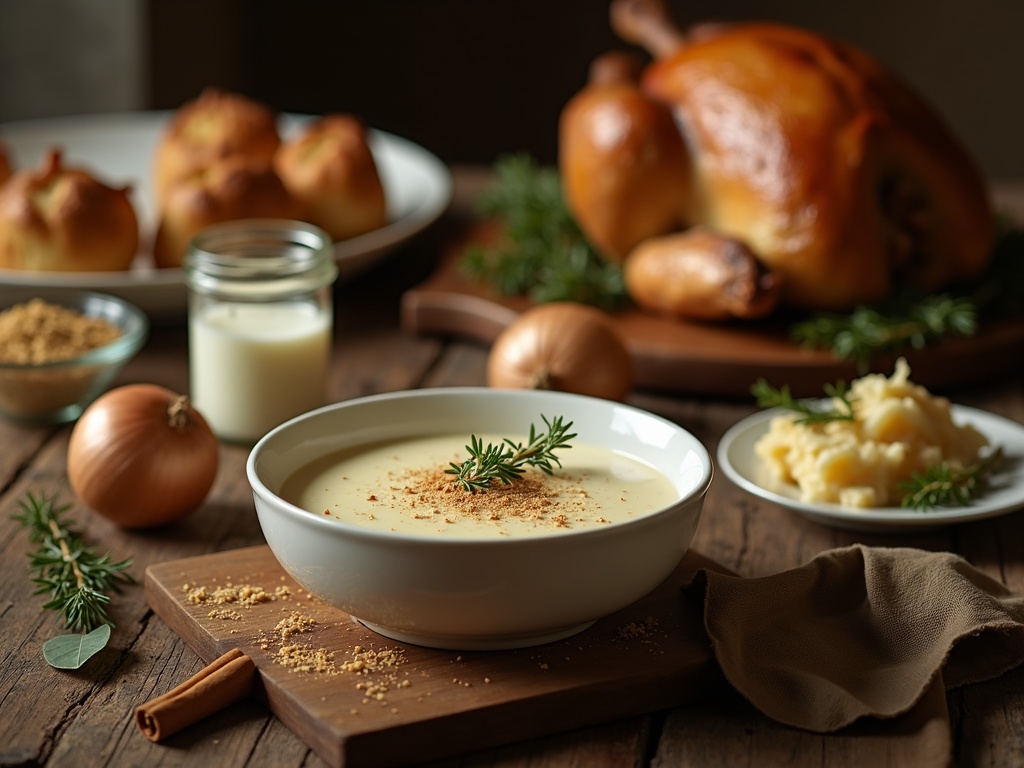
Sources:
BBC Good Food Magazine
The Guardian

